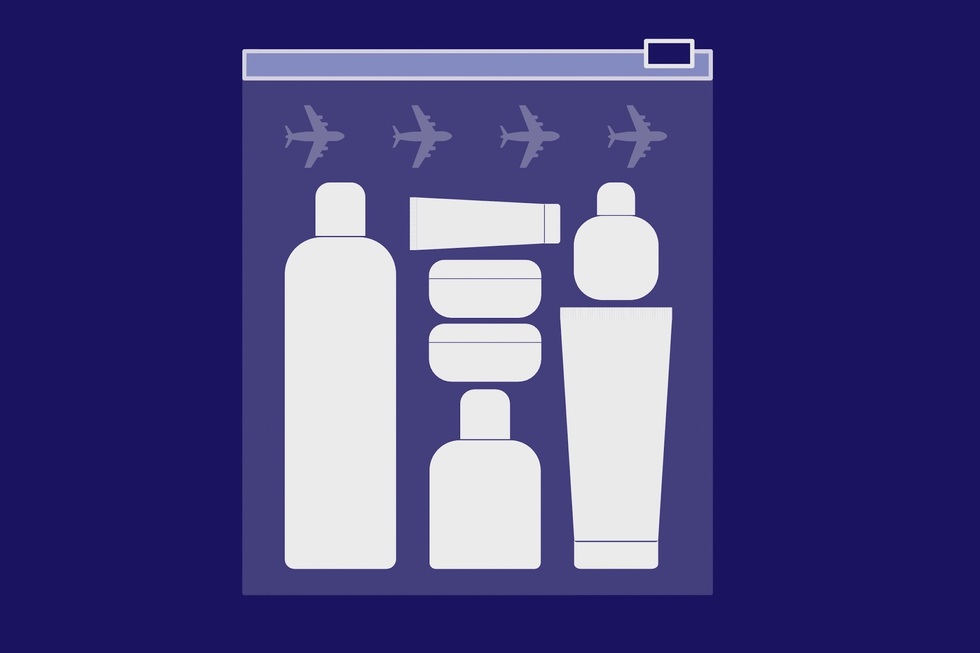The days of bringing a full-sized bottle of water or shampoo in your carry-on bag for a flight are, by and large, a distant memory.
In fact, some young travelers have never known such a world.
The Transportation Security Administration (TSA) clampdown on liquids and gels dates back to the late summer of 2006, when British authorities thwarted a liquid-based plot by terrorists to bomb commercial aircraft. Many other countries in Europe and around the world put similar restrictions in place at the same time.
Now, though, the United Kingdom is just over a year away from significantly relaxing those liquid policies at security checkpoints. In fact, the pullback of the rules is already unfolding at two airports in London.
After nearly 17 years, the move by British officials is begs the question: Could the days of clear plastic bags and miniature toiletries be numbered in the U.S., too?
United Kingdom ending its liquids rules
The U.K.’s Department for Transport made plenty of headlines in late 2022 by announcing its "biggest shake-up of airport security rules in decades."
The December memo set a June 2024 deadline for all of the country’s airports to install new, "cutting-edge" computerized tomography (CT) security scanners that provide three-dimensional images of baggage contents.
Thanks to the new technology and accompanying rule changes, flyers will no longer have to remove large electronic devices such as laptops, and liquids will no longer be restricted to 100 milliliters (equivalent to 3.4 ounces).
It’s a move aimed at both improved security and a more pleasant passenger experience, British officials said.
"The tiny toiletry has become a staple of airport security checkpoints, but that’s all set to change," U.K. Transport Secretary Mark Harper proclaimed in the announcement.
Some of the changes are already happening.
London Gatwick Airport recently began testing the new methods in one security lane, and the airport "will meet" next summer’s deadline to deploy the changes facility-wide, Gatwick officials told Frommer’s.
Meanwhile, London City Airport, a smaller airport on the east side of the U.K. capital, recently became the first to fully switch to the new rules in all its security lanes.
The changes have certainly caught the attention of industry officials outside the U.K..
"It’s not an understatement to say that the eyes of the world’s aviation security community will be on the U.K.," said aviation analyst Henry Harteveldt, president of Atmosphere Research Group. He noted the safety reasons behind existing policies. "There will understandably be a lot of—not just interest in what the U.K. does—but [also] potential concern. Does everything work as expected?"
But even as the TSA expands its own rollout of CT security scanners in the U.S. with the help of a new, billion-plus dollar contract awarded in April, don’t expect to bring your jumbo sunscreen bottle through the checkpoint soon.
Is the TSA 3-1-1 rule going away?
Make no mistake about it: The TSA is trying to make the airport security experience less arduous. As the agency ramps up its use of the higher-capability scanners, more passengers outside the TSA PreCheck lanes should be able to leave large electronics and liquids in their bags, avoiding the hassle of removing them for separate inspection.
For now, though, that seems to be the extent of any planned changes with respect to liquids in the United States.
"While we have [the new scanners] deployed at more checkpoints, we are years away from announcing a change to the current liquids rule," the TSA said in a statement to Frommer’s.
In addition to safety and technological considerations, the sheer number of airports the American agency oversees (compared with the U.K.) gives such a policy shift a different scale on the U.S. side of the Atlantic.
Indeed, the U.S. agency would likely need to roll out any liquids policy changes simultaneously to every airport, big and small, to avoid confusing passengers, Harteveldt said. And that takes extensive planning.
"We as travelers … want things to be reasonably similar," Harteveldt said. "Unfortunately, 3-1-1 is not going to go away tomorrow, and I don’t even know that it goes away within three years. It’s possible that in perhaps a five-to-seven year timeframe, we see the restriction on liquids go away."
In the meantime, some travelers flying out of a U.K. airport now, and out of many more by 2024, can at least enjoy the more streamlined security experience there.
Back here in the U.S., though, 3-1-1 remains the prevailing order, for the foreseeable future, when it comes to liquids, gels, aerosols, creams, and pastes. And those rules remain: No single bottles of more than 3.4 ounces, all bottles in one clear plastic bag, with no more than one such bag per passenger.






